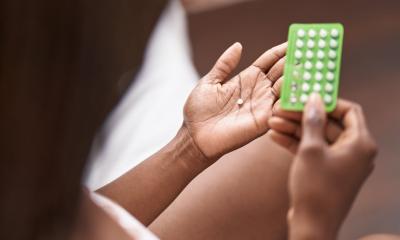- PM strongly condemns terrorist attack on police mobile in D.I.Khan RADIO PAKISTAN
- Three police officers martyred in IED blast in DI Khan The Express Tribune
- Four Militants, Two Policemen Killed in Fierce Clash at Pakistan Checkpost Deccan Herald
Author: admin
-
PM strongly condemns terrorist attack on police mobile in D.I.Khan – RADIO PAKISTAN
-

Australian team for second Test, Pat Cummins update, Josh Inglis in Gabba starting XI vs England in Brisbane, Steve Smith press conference, video
The door remains open for Pat Cummins to be parachuted into Australia’s side for the second Ashes Test against England, with stand-in Steve Smith confirming his return was still “on the table” for the Gabba clash.
Speaking to reporters in…
Continue Reading
-

Regional Cyber Center Malaysia 03122025
The opening of the Regional Cyber Center not only strengthens Leonardo’s positioning as a leader in global security, but also consolidates Malaysia’s role as a strategic hub for the Southeast Asia
The Global CyberSec Center based in Kuala Lumpur joins Leonardo’s global network, which already includes the federated centers in Chieti, Bristol, Brussels and Riyadh
The opening of the new Regional Cyber Center strengthens Leonardo’s positioning as a leader in technologies for global security. The inauguration, which took place today in the presence of the Malaysian Minister of Communications, Yang Berhormat Datuk Fahami Fadzil, underlines the company’s commitment to ensuring global security, responding proactively to today’s increasingly complex and rapidly evolving cyber threats.
The strategic choice of Malaysia reflects the country’s leading role in cybersecurity. Malaysia stands out in the region for its advanced legislation on the subject and its protection of critical national infrastructure. Leveraging the integration of Leonardo’s proprietary technologies in the field of cyber security, physical security and mission-critical communications and its experience in strategic sectors in Italy and abroad, the new Center will make a substantial contribution to global protection against new hybrid threats, strengthening the digital autonomy and supporting the sustainable development of Malaysia and the entire region.
The new center in Kuala Lumpur is part of the Global CyberSec Center (GCC), Leonardo’s trusted and mission-critical cybersecurity service provider headquartered in Chieti (Italy), and joins the already operational federated Regional Cyber Centers in Brussels (European Union), Bristol (United Kingdom) and Riyadh (Saudi Arabia). The GCC’s global network is designed to ensure cyber mission assurance for strategic customers – including defence organisations and critical national infrastructures – by pooling processes, information on threats, and cutting-edge technologies. This federated model ensures both the ability to operate on a global scale in preventing, countering and responding to new threats, and the control of strategic data, fully respecting individual national sovereignty.
“This initiative is a long-term investment reflecting Leonardo’s major commitment to building a strong industrial and technological partnership with Malaysia while contributing to the development of high specialised local human capital. In a world where cyber self-reliance has become the new currency of stability, we enable National Strategic Organizations to assure security and continuity of their operations leveraging our Global CyberSec Platform. Through this investment in Malaysia, our objective is to support the transformation of critical infrastructures, such as National Cloud and National Security Operation Centers, into autonomous strategic assets”. States Andrea Campora, Leonardo’s Managing Director Cyber & Security Solutions Division.
The inauguration of the new regional Cyber Center in Malaysia represents a key milestone in Leonardo’s long-term strategy of expanding its international presence in the country and throughout the region. The initiative, combined with recent acquisitions in Zero Trust architecture, further strengthens Leonardo’s leading role in ensuring global security, and consolidates Malaysia as a crucial and strategic hub for the Southeast Asia and, in perspective, for the Far East.
Leonardo has had an established presence in Malaysia for over forty years, making a significant contribution to its defence and aerospace sectors. Over the decades, the company has supported the country with a comprehensive portfolio of advanced solutions, including helicopters for military and commercial operations, military aircraft, integrated defence systems – such as radar and both naval and electronic warfare capabilities – and security solutions for critical infrastructure and mission-critical communications.
Photo
Continue Reading
-

Programmed death ligand-1 expression and genetic alterations in high-g
Department of Cardiothoracic Surgery, Ruian People’s Hospital, The Third Affiliated Hospital of Wenzhou Medical University, Wenzhou, Zhejiang, 325000, People’s Republic of China
Background: Lung cancer, the most common malignancy in humans,…
Continue Reading
-

CVC announces the acquisition of Smiths Detection for £2bn
CVC, one of the world’s leading private markets investment firms, today announced that it has entered into an agreement to acquire Smiths Detection, a global leader in threat-detection and security-screening technologies for airports and critical infrastructure, from Smiths Group plc. Leveraging CVC’s extensive experience in executing corporate carve-outs and history of scaling newly independent companies, Smiths Detection is well placed to build on its strong market positions and unlock substantial long-term value.
Headquartered in the UK, Smiths Detection employs 3,400 people, including over 1,100 field service engineers and over 500 R&D professionals and operates from facilities across Europe, the US and Asia. The business has a global #1 position in aviation security – i.e. screening technology for carry-on bags, hold luggage, and air cargo at airports – where it serves 47 of the world’s top 50 airports, with both industry-leading hardware and sector-leading digital capabilities, including automated detection algorithms. Smiths Detection also serves other critical infrastructure end markets such as urban security (screening systems for government and commercial buildings, public venues and spaces ) and ports and borders (cargo and vehicle inspection) and the business has a leading niche chemical threat identification capability for defense end markets.
Dominic Murphy, a Managing Partner and Co-Head of the UK private equity team at CVC and Conor Keogh, Managing Director at CVC, said: “Smiths Detection’s industry-leading threat detection and security screening technologies play a crucial role in helping protect people and critical infrastructure worldwide. We look forward to supporting the business during the next phase of its growth and development through continued investment in technology innovation, high-quality engineering and best-in-class aftermarket service.”
James Mahoney, Partner and Head of CVC’s private equity activities in the Aviation, Defence & Space sectors added: “We are excited to partner with Jérôme de Chassey and his team. Smiths Detection’s strong market positions, anchored by its global leadership in aviation, create a compelling platform for long-term value creation.”
The transaction is subject to customary regulatory approvals and is expected to close in the second half of 2026. Barclays acted as financial advisor and Latham & Watkins acted as legal counsel to CVC.
The investment will be made through CVC Capital Partners IX.
Continue Reading
-

Doctor to be sentenced for selling Matthew Perry ketamine before ’Friends’ star’s overdose death
Dr. Salvador Plasencia leaves federal court with his attorneys on July 23, 2025 in Los Angeles, after pleading guilty to giving ketamine to Matthew Perry, leading up to the actor’s 2023 overdose death.
…Continue Reading
-

Chanel’s new showman stages an ode to NYC with star-packed runway show on a real subway platform
NEW YORK — Chanel’s new showman, Matthieu Blazy, took his designs on the road Tuesday — or rather, underground, with a buzzy New York runway show staged on an actual subway platform.
The designer, just weeks after his splashy Paris debut for…
Continue Reading
-
Chinese researchers achieve thorough simulation of Martian dust cycle-Xinhua
BEIJING, Dec. 3 (Xinhua) — A group of Chinese researchers has carried out a comprehensive simulation of the Martian dust cycle, based on their self-developed next-generation Mars general-circulation model named GoMars.
According to a…
Continue Reading
-

Deadly Asian floods are no fluke. They’re a climate warning, scientists say
HANOI, Vietnam — Southeast Asia is being pummeled by unusually severe floods this year, as late-arriving storms and relentless rains wreak havoc that has caught many places off guard.
Deaths have topped 1,400 across Indonesia, Sri Lanka, and…
Continue Reading
-

Study explores mental health toll of the pill • healthcare-in-europe.com
Women at high risk of depression achieve fewer years of education, have lower work productivity and report more sick days and functional impairments when they have access to the contraceptive pill
Franziska Valder
By combining data on legislation,…
Continue Reading